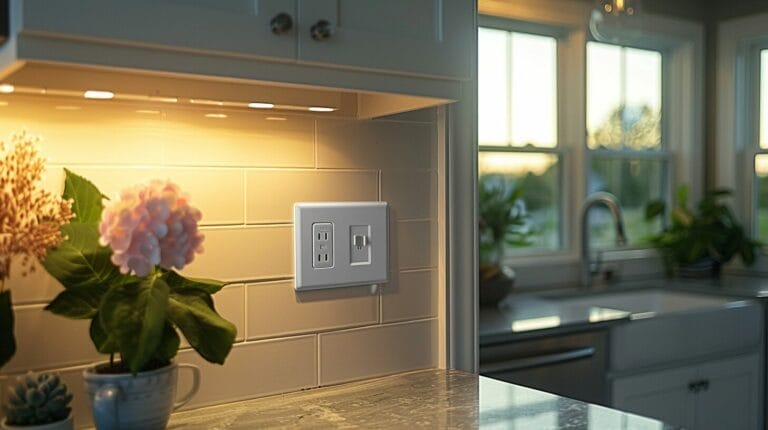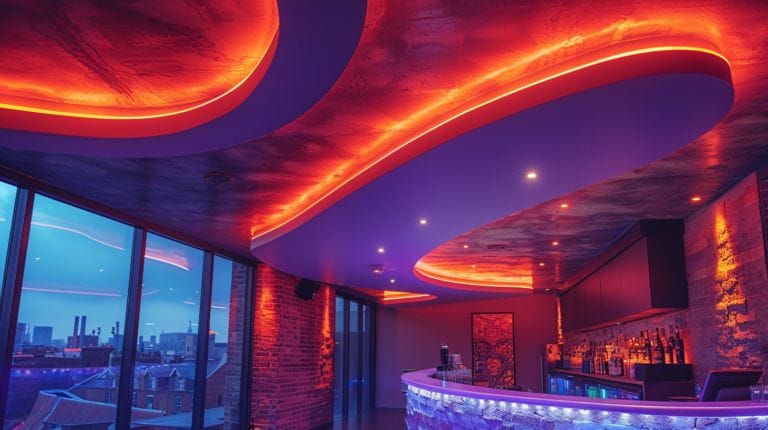Why Are Light Bulbs Important: Exploring the Long History
Light bulbs have quietly lit up our world for centuries, symbolizing progress, innovation, and societal change. Beyond their simple function of providing light, they have played an indispensable role in our lives.
So, Why are Light Bulbs important? Let’s delve into the intricate history, technology, and impact of these essential inventions, including the arc lamp and halogen bulbs, on our daily lives, and explore how ultraviolet light is converted into visible light enhancing their utility.
Key Takeaways
- Light bulbs revolutionized lighting, replacing traditional sources and enhancing productivity and safety.
- Energy-efficient LED and CFL bulbs offer sustainability by reducing energy consumption and greenhouse gas emissions, underlining the transformative impact of the light bulb on environmental conservation.
- Technological advancements in light bulbs, like Smart Lighting Systems, provide customizable and efficient solutions.
- Choosing LED or CFL bulbs based on energy efficiency and brightness benefits the environment and saves money.
The Invention and History of the Light Bulb

The invention of the light bulb revolutionized the way we illuminate our world, tracing its roots back to the pioneering work of Humphry Davy and the groundbreaking innovations of Thomas Edison. The incandescent bulb, with its glowing filament housed in a vacuum or inert gas, marked a significant leap in lighting technology. Edison’s perseverance led to the first commercially viable incandescent bulb, fundamentally changing how we light our homes, streets, and workplaces.
Before the light bulb, society relied heavily on candles, oil lamps, and gas lighting. The introduction of the incandescent bulb provided a more reliable and efficient light source, paving the way for urban development and extended work hours. Suddenly, people could control their lighting with a simple switch, transforming night into day, enhancing productivity, and improving safety.
The light bulb’s impact on society is profound. It revolutionized industries, influenced social interactions, and impacted urban planning. The ability to control light led to lifestyle changes, increased leisure time, and fostered a culture of innovation. The light bulb truly illuminated a path towards progress and modernity since its inception in 1879, marking the beginning of a new era in electric lighting spearheaded by General Electric and others.
The Critical Role of Light Bulbs in Everyday Life

Light bulbs play a critical role in our daily lives, revolutionizing how we perceive and interact with our surroundings. The tungsten filament, a key innovation, allows for greater light output and efficiency. In domestic use, they transformed our homes into vibrant, well-lit spaces where activities extend beyond daylight hours.
Commercially, light bulbs enhance productivity and create inviting atmospheres for customers, with tungsten filament bulbs often favored for their warm light output. Moreover, they provide visibility in dark environments, preventing accidents and ensuring security.
The evolution of light bulbs from simple incandescent ones to energy-efficient LED options hasn’t only improved lighting quality but also paved the way for innovative applications in various industries. As we continue to rely on light bulbs for their practicality and versatility, their importance in everyday life remains undisputed.
Environmental Impact of Light Bulbs

Light bulbs have a significant environmental footprint. Traditional incandescent bulbs are inefficient, wasting a large portion of energy as heat rather than light. This inefficiency leads to higher energy bills and increased greenhouse gas emissions due to the greater amount of electricity needed to power them, a concern that has been addressed with the introduction of bulbs that emit light in a specific direction and have diffusers that can trap light.
However, energy-efficient options like LED and CFL bulbs offer a more sustainable alternative. These bulbs consume significantly less energy, leading to reduced greenhouse gas emissions and lower electricity costs. Moreover, the longer lifespan of LED bulbs means fewer bulbs end up in landfills, positively impacting waste management and recycling efforts.
The Advancement and Innovation in Light Bulb Technology

The evolution of light bulb technology reveals a journey marked by significant advancements and innovative breakthroughs. Lighting technologies have shifted towards energy-efficient options, with compact fluorescent lights (CFL) and light-emitting diodes (LED) leading the way. These advancements save energy and have a longer lifespan, making them popular among eco-conscious consumers, especially with the introduction of technology that allows ultraviolet light to be converted into visible light.
- Compact Fluorescent Light (CFL): CFL bulbs are energy-efficient, using about 70-80% less energy than traditional incandescent bulbs, showcasing the significant advancements in fluorescent lamps over the years, including the creation of the first compact fluorescent light. They last longer, reducing the frequency of replacements and overall energy consumption.
- Light-Emitting Diode (LED): LED bulbs are highly efficient and durable, offering even greater energy savings compared to CFLs. They’re versatile in design, allowing for various shapes and colors, and are increasingly being used in smart lighting systems for added convenience and control, demonstrating the adaptability of LED and fluorescent lamps in contemporary lighting solutions.
- Smart Lighting Systems: The introduction of smart bulbs has revolutionized the way we interact with lighting. These bulbs can be controlled remotely via smartphone apps or voice commands, offering features like dimming, color-changing options, and scheduling, enhancing both convenience and energy efficiency.
As we look towards the future of light bulbs, ongoing advancements in technology promise even more efficient, customizable, and sustainable lighting solutions.
Making Conscious Choices: Selecting the Right Light Bulbs

When selecting light bulbs for home use, it’s crucial to consider factors such as energy efficiency, brightness, and compatibility with fixtures. Understanding the role of the tungsten filament in enhancing light output can aid in making informed decisions. Energy-efficient light bulbs not only reduce electricity costs but also contribute to sustainability and environmental conservation, with advancements such as diffusers that can trap light, further enhancing their efficiency.
The light bulbs we use today have evolved significantly since the first compact fluorescent light was introduced, leading to the widespread adoption of LED technology, which efficiently uses ultraviolet light converted into visible light. They consume less energy, last longer, and produce less heat, making them an ideal choice for any lighting system, benefits that are a direct result of the invention of the incandescent light bulb and subsequent innovations.
LED and CFL bulbs are both highly energy-efficient and have a longer lifespan compared to traditional incandescent bulbs. Despite their slightly higher upfront price, both LED and CFL options are cost-effective in the long run, according to studies by the Department of Energy. Their tungsten filaments and energy-efficient design ensure a high light output, converting electricity into visible light more effectively than older models.
Conclusion
In conclusion, light bulbs have played a crucial role in shaping our modern world, with advancements such as the tungsten filament and the development of the first compact fluorescent light marking pivotal moments in this journey. From their invention by Thomas Edison to the advancements in energy-efficient technology, these small yet powerful devices have illuminated our lives in countless ways.
As we continue to prioritize sustainability and innovation, selecting the right light bulbs can make a significant difference in reducing our environmental impact and improving our everyday experiences.
Let’s shine a light on the importance of light bulbs and make conscious choices for a brighter future, considering the environmental impact and the role of energy-efficient light fixtures.
Frequently Asked Questions
What is the significance of light bulbs?
Light bulbs are important as they provide artificial light, allowing us to see and work in the dark, thus increasing productivity and extending our activities beyond daylight hours. The first compact fluorescent light, introduced in the late 20th century, marked a significant advancement in this regard.
Who is known as the inventor of the light bulb?
Thomas Edison is credited with inventing the incandescent lamp, which marked a significant milestone in the history of electric lighting.
How do modern light bulbs differ from the early models?
Modern light bulbs, such as LEDs and compact fluorescent lights, are more energy-efficient and have longer lifespans compared to older models using carbon filaments.
What is the impact of light bulbs on society and the environment?
The invention of light bulbs revolutionized how we illuminate our surroundings, but it also raised concerns about energy consumption and waste disposal due to the presence of mercury in some types of bulbs.
How do light bulbs produce light?
Light bulbs produce light by passing an electrical current through a filament or gas to cause it to emit visible light, as in the case of incandescent, LED, and fluorescent bulbs.







